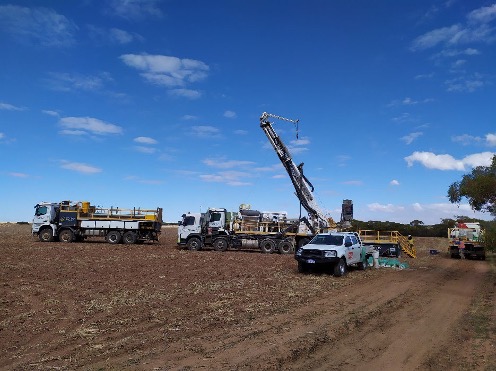Codrus Minerals (ASX: CDR) has intersected a significant zone of high-grade clay-hosted rare earth element (REE) mineralization in the maiden (RC) drill-hole completed as part of its maiden dill programme at the recently acquired Karloning REE-Niobium Project in Western Australia.
Initial assays from the top 40m of the first hole completed at the Karloning REE-Niobium Project in WA (KLRC001) returned a high-grade intercept of 12m grading 2,680ppm TREYO, including 4.0m grading 4,764ppm TREYO.
The recently completed drilling programme was aimed at confirming the project’s credentials as an exciting growth and diversification opportunity for Codrus in the rare earths sector, with all samples submitted for assay. Results for the top 40m of the first hole were rushed for analysis based on visual observations and are reported in this announcement.
In November 2022, Codrus entered into a farm-in and joint venture agreement with Talgomine Minerals Pty Ltd to earn up to a 90% interest in the Karloning Project, which is located in Western Australia’s Wheatbelt region. The company has also pegged an additional tenement adjacent to this in its own right.
Managing Director, Shannan Bamforth, said the Project offers compelling exploration potential for the high-value REE’s used in the manufacture of high-strength permanent magnets – namely praseodymium, neodymium, terbium and dysprosium.
These elements are in high demand because of the explosive growth in industries that rely on permanent rare earth magnets, such as electric vehicles, wind turbines and other renewable energy applications.
“This is a very exciting result from our first-ever drill hole at Karloning, confirming the presence of shallow clay-hosted rare earths mineralization in addition to the hard rock hosted REE mineralization that the project was originally acquired for.
“This provides Codrus with the opportunity to pursue rare earths discoveries within two separate geological units – both the near-surface clay horizon and the pegmatites.
“This first round of drilling at Karloning is now complete, with assays from the lower portion of KLRC001 and the other 12 drill holes eagerly awaited. Results are expected to significantly enhance our understanding of the structure and distribution of rare earths and niobium mineralization at Karloning, which offers an outstanding opportunity for Codrus to diversify into the critical metals space.”
Future Work
Remaining assay results from the RC drilling program are eagerly awaited from the laboratory. For areas where the 4.0m composite samples return anomalous results, the single-metre splits will be submitted for analysis at the laboratory.
It is anticipated that follow-up drilling will be required to support the results of this early success. Testing of any additional soil anomalies will also be planned in due course.
For further information please visit: https://codrusminerals.com.au/












